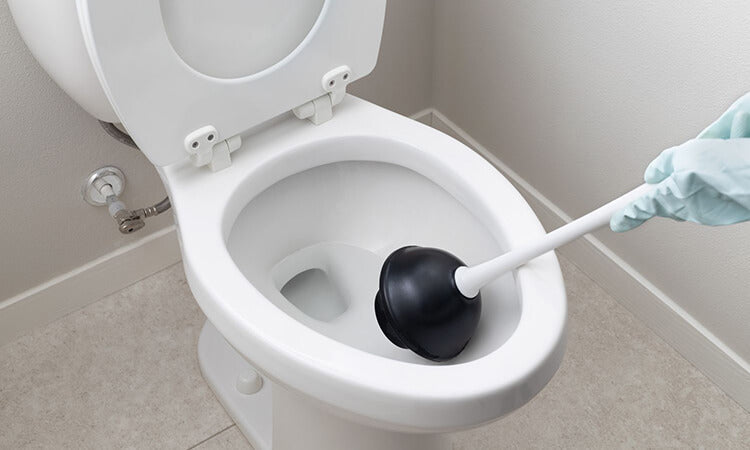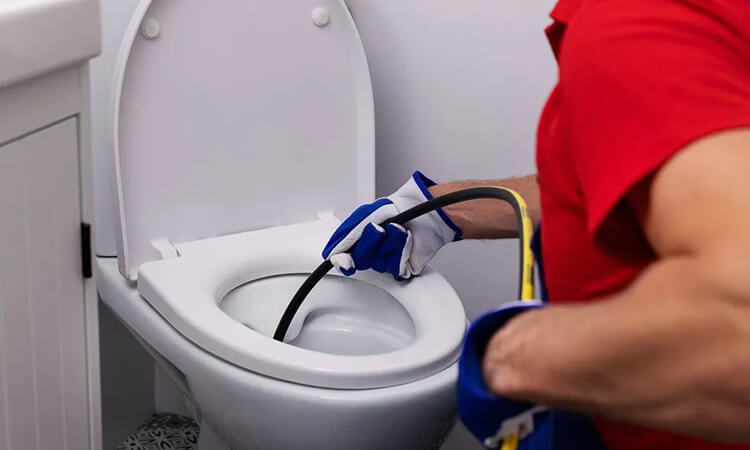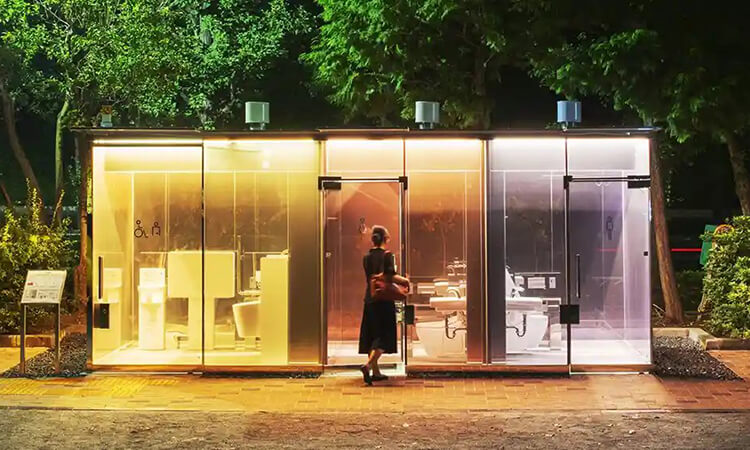The flush toilet we use every day may seem ordinary—a simple, taken-for-granted part of modern life. Yet its story stretches back thousands of years, from ancient civilizations to early societies, reflecting humanity’s ongoing pursuit of hygiene, comfort, and technological progress.
From primitive drainage systems around 2000 BCE to the engineering breakthroughs of the 18th-century Industrial Revolution, and on to today’s water-saving and smart toilets, this essential invention has evolved from an elite luxury into a household necessity for billions around the world.
Join us as we trace the fascinating journey of the flush toilet, exploring how this seemingly simple invention shaped human lifestyles, public health, and modern bathroom civilization—one flush at a time.
Ancient Prototypes: 2000 BCE – 16th Century, Between Luxury and Crudeness
Long before the modern toilet, humans were already experimenting with ways to manage waste more conveniently. Yet limited technology and social structures meant that early “toilets” were mostly reserved for the elite, rudimentary in design, and far from comfortable or hygienic.
Luxurious Experiments in Ancient Civilizations: From Mesopotamia to Ancient Rome
The earliest evidence of water-assisted waste disposal comes from Mesopotamia (modern-day Iraq) around 2000 BCE. Archaeologists found that some noble residences in the ancient city of Ur featured clay pipes beneath indoor stone seats. Residents could pour water to carry waste into these pipes, which emptied into external channels. Though far from automatic, this system captured the fundamental idea of flushing with water.
Around 1700 BCE, the Minoans of Crete (Ancient Greece) advanced this concept further. Excavations at the Palace of Knossos revealed a “proto-flush toilet”—a limestone basin connected to clay pipes. One pipe led to a sewage pit, while another connected to a rainwater collection system. Rainwater could flow into the basin and partially flush the waste. The basin edges were polished, and wooden covers were installed, blending hygiene with comfort—a true luxury for its time.
Ancient Rome took sanitation to a new level. By 312 BCE, the Romans built the Appian Aqueduct to supply clean water across the city and constructed public latrines. Marble seats lined the facilities, and flowing water channels beneath removed waste, eventually discharging into the Tiber River. These public toilets were available to citizens in markets, bathhouses, and other communal spaces, while ordinary people continued to rely on chamber pots at home.

The Middle Ages Regression: Hygiene Decline and Crude Toilets
After the fall of Rome, Europe entered the Middle Ages (5th–15th century), a period marked by declining hygiene and stagnant toilet technology. Cities lacked organized sewage systems. Nobles often used privies inside castles—holes in walls with wooden buckets or direct discharge into moats. Water had to be poured manually to flush, or waste was simply allowed to drop, creating foul odors and health risks.
For the general population, conditions were even worse. Wooden chamber pots were emptied directly into streets or rivers, severely worsening urban sanitation. These conditions contributed to the frequent outbreaks of the Black Death in medieval Europe.
It wasn’t until the Renaissance in the 16th century that some European nobles began refining toilets, adding lids or dedicated waste rooms. Yet despite these small improvements, the core technology of a water-flushing system remained largely undeveloped.
Modern Innovations: 17th–19th Century, From Patented Inventions to Urban Standardization
From the 17th century onward, the Industrial Revolution and rapidly growing urban populations created a pressing need for better sanitation. During this period, the toilet underwent key breakthroughs, evolving from a “noble toy” into a product with the potential for broader use. Inventors focused on improving flushing mechanisms while cities began developing sewage networks to support wider adoption.
1596: John Harrington’s Prototype and the Water-Seal Concept
John Harrington, an English nobleman, is often called the “father of the flush toilet.” In 1596, he designed a flushing toilet for his godmother, Queen Elizabeth I, detailed in A New Discourse of the Metamorphosis of Ajax. The device included a wooden seat, a water tank, and a curved S-shaped pipe (a primitive water trap). Pulling a cord released water from the tank, flushing waste while the water trap prevented foul odors.
Harrington’s toilet was the first to combine odor control with mechanical flushing, solving a major problem of early sanitation. Installed at Richmond Palace, it reportedly impressed the Queen, though widespread adoption was impossible due to the lack of urban sewage systems and the need for manual tank refills. Harrington was even mocked by contemporaries as a “mad inventor.”
1775: Alexander Cumming’s Patent and the P-Trap Improvement
In 1775, English watchmaker Alexander Cumming improved Harrington’s design and received the world’s first flush toilet patent. Cumming replaced the S-shaped trap with a P-shaped water trap, creating a more stable seal and optimizing water flow. He also refined the tank valve, enabling smoother flushing and reducing clogs.
Cumming’s patent established the technical blueprint for modern flush toilets: water tank + seat + trap pipe. Despite these advances, early toilets remained expensive, bulky, and reliant on indoor sewage pipes, keeping them out of reach for ordinary households.

1852: George Jennings and the Public Toilet Revolution
By the mid-19th century, Britain’s Industrial Revolution had triggered urban overcrowding and public health crises, including the 1854 London cholera outbreak. These challenges accelerated the adoption of public toilets and flush systems. In 1852, engineer George Jennings designed a public flush toilet for the Great Exhibition in Hyde Park, London, attracting widespread attention.
Jennings introduced ceramic seats for easier cleaning and enhanced the flushing system by reducing tank size and employing the siphon principle, increasing efficiency while conserving water. He also advocated for municipal public toilets on streets and in train stations, giving ordinary citizens access to hygienic sanitation. Other European cities soon followed, making public flush toilets a core component of urban infrastructure.
1885: Thomas Twyford’s Siphonic Toilet and the Birth of the Modern Toilet
In 1885, English plumber Thomas Twyford created the all-ceramic siphonic flush toilet, marking a turning point in toilet design. By integrating the seat, tank, and trap pipe into a single ceramic unit, Twyford’s model improved durability, hygiene, and aesthetic appeal.
The siphonic flush used water flow to create a vacuum effect, efficiently removing waste into the sewer while reducing noise. Twyford’s design closely resembles today’s household toilets. With the expansion of urban sewage networks in Britain, this model quickly reached ordinary homes. By the late 19th century, over half of urban households in the UK had flush toilets, signaling the arrival of modern sanitary civilization.
Modern Development: 20th–21st Century, From Basic Functionality to Eco-Friendly Smart Toilets
In the 20th century, the focus of toilet innovation shifted from simply having a toilet to improving how well it works. Engineers and designers prioritized water efficiency, comfort, and intelligence, while rising global environmental awareness led to the establishment of water-saving standards. Modern flush toilets became both functional and eco-friendly, balancing performance with sustainability.
Early 20th Century – 1980s: Standardization, Comfort, and Global Adoption
In the early 1900s, the United States emerged as a hub of flush toilet innovation. In 1907, American Standard introduced an integrated ceramic toilet, optimizing siphonic flushing to limit water use to roughly 5 gallons (~18.9 liters) per flush. The 1920s saw the invention of slow-close toilet seats, reducing noise from slamming lids. By the 1950s, one-piece toilets were introduced, seamlessly combining tank and bowl and eliminating hard-to-clean areas.
Flush toilets spread beyond Europe and the US during this period. After World War II, rapidly urbanizing countries in Asia—such as Japan and South Korea—prioritized household flush toilets as part of public health initiatives. By the 1980s, over 90% of households in developed nations had flush toilets, with urban areas in developing countries catching up quickly.
1990s – 2010s: The Water-Saving Revolution
From the 1990s onward, global water scarcity became a pressing concern, shifting toilet development toward water conservation. In 1992, the US Energy Policy Act mandated that new toilets use no more than 1.6 gallons (~6 liters) per flush, known as the 1.6 GPF standard, sparking a worldwide push for water-saving toilets.
Two major innovations emerged:
- Dual-flush systems: Offering a small flush (1.0 GPF for liquid waste) and a large flush (1.6 GPF for solid waste) to reduce unnecessary water use.
- High-efficiency siphonic flushing: Optimized water flow creates a strong siphon effect, maintaining flush performance while conserving water.
By the 2010s, mainstream toilets globally had reduced flush volumes from 5 gallons to as low as 1.28 gallons (~4.8 liters), with some high-end models using only 0.8 gallons (~3 liters) per flush—achieving significant water savings.

2020s–Present: Smart Upgrades, Integrating Technology and Comfort
In the 2020s, flush toilets have evolved into smart devices, combining technology, health monitoring, and user comfort:
- Automatic sensors: Radar or infrared sensors lift lids and flush automatically, minimizing bacterial contact.
- Health monitoring: Some smart toilets can analyze urine and stool to track indicators like blood sugar and uric acid, offering data for personal health management.
- Enhanced cleaning and comfort: Features like warm-water cleansing, air drying, and heated seats improve usability for children, the elderly, and women during menstruation.
- Environmental upgrades: Rainwater recycling and greywater systems allow filtered wastewater from sinks and showers to be reused for flushing, reducing potable water consumption and supporting carbon-neutral initiatives.
These advancements illustrate how the flush toilet has transformed from a purely functional fixture into a high-tech, eco-conscious, and health-focused component of modern homes.
Ending
From the limestone seats in Crete’s palaces to today’s smart, water-saving toilets, the millennia-long evolution of the flush toilet represents humanity’s enduring pursuit of cleanliness, health, comfort, and civilization.
This is more than just a tool for waste disposal—it’s a mirror of technological progress, rising hygiene standards, and social development across the ages. When flush toilets shifted from elite luxury to universal access, when water usage dropped from excessive to precisely controlled, and when mere waste removal evolved into health monitoring and eco-friendly design, we witnessed the embodiment of humanity’s quest for a better life.
Yet the story is far from complete. According to the latest data, approximately 3.5 billion people worldwide still lack access to safely managed sanitation services, meaning toilets or latrines that lead to waste treatment or safe disposal. This gap signals that toilet evolution remains a global challenge and an opportunity. Future toilets will likely become smarter, greener, and more accessible to all—continuing to accompany human civilization toward cleaner, more comfortable living.
Every time we sit down—or flush—we can reflect on how this seemingly ordinary invention has changed the world and will continue to shape our future.







